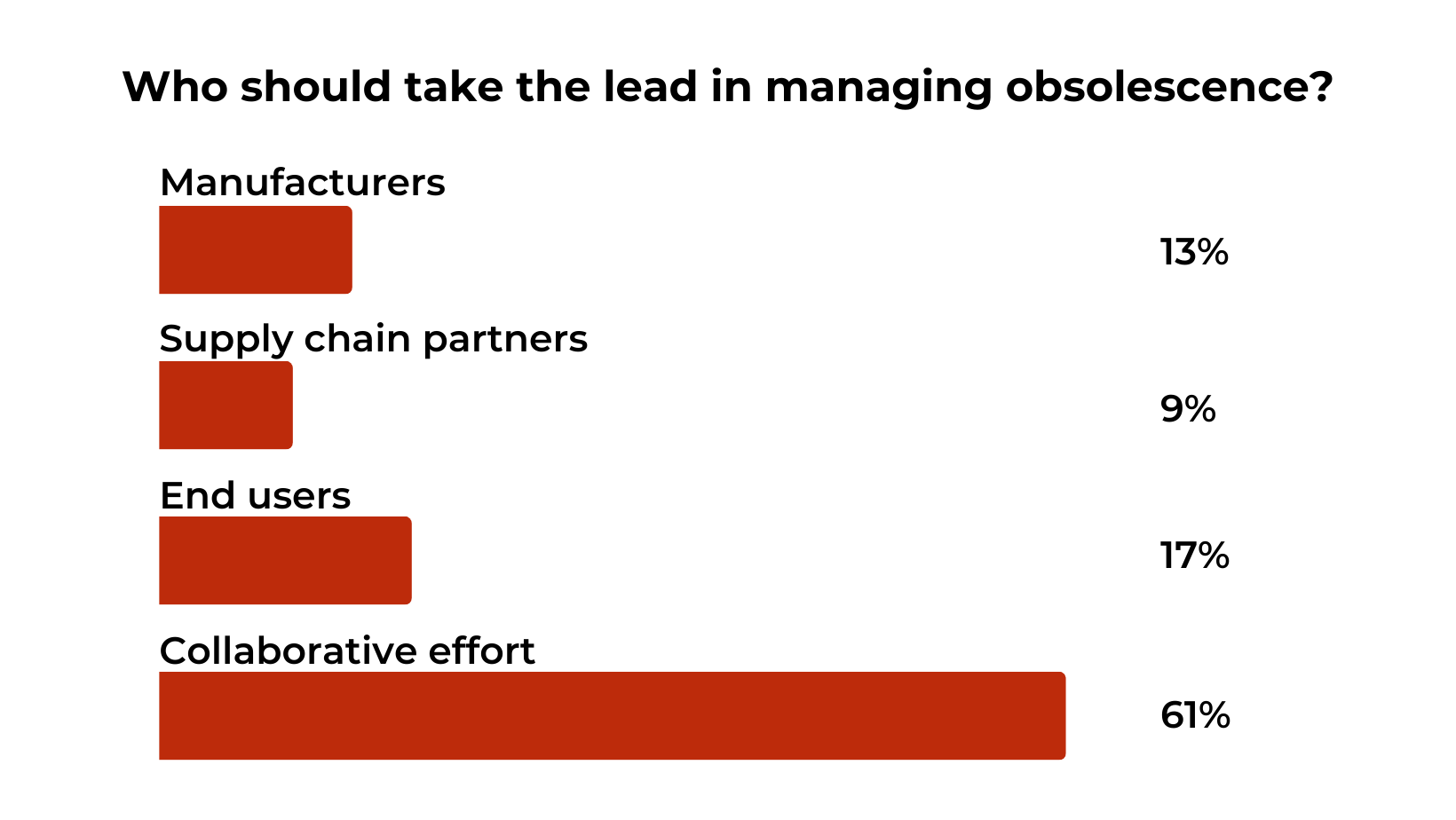Who Should Take the Lead in Managing Obsolescence?
In our Future of Obsolescence Management (FOM) poll for February, we asked the FOM community to share their thoughts on who should take the lead on managing obsolescence. As we explore the results from the poll, we’ll take a deeper look at the perspectives of different stakeholders on this multidimensional topic.
According to the poll, 13% of respondents believe that the manufacturers should take the lead in managing obsolescence. Interestingly, only 9% of the respondents think that supply chain partners should be responsible for it, while 17% believe that end users should be in control. The vote for a collaborative effort between all stakeholders took the overwhelming majority of 61%.

When Manufacturers Take the Lead
Manufacturers are at an advantage as they have control over the entire product lifecycle, from design to end-of-life, which enables them to manage obsolescence effectively. One reason people advocate for manufacturers to take the lead is the perception that when a product is designed or bought within its lifecycle or warranty period, there is an expectation of it being covered. However, this is not always the case.
Supply Chain Partners’ Responsibility
Supply chain partners, such as distributors or an EMS partner, are seen as the bridge between manufacturers and end users. Some individuals believe that these partners should be the ones taking the lead in managing obsolescence. The reasoning behind this perspective is that supply chain partners are expected to possess more knowledge and be more invested in any changes that affect the product lines they represent. They also have an advantage to seeing a wider context of what is happening in the supply chain. With the relationships they have between manufacturers and end users they are able to see both sides.
End Users in Charge
The viewpoint that end users should take the lead stems from the belief that they have the ultimate control and are responsible for monitoring their own product success. Historical data, such as Product Change Notifications (PCNs) versus obsolete parts, highlights that end users need to be proactive in managing their supply chains and ensuring the availability of components or alternatives in the face of obsolescence. However, there is often a challenge with communication on receiving PCNs and end-of-life notifications which leaves end users at a disadvantage to know exactly how their products may be impacted.
Collaborative Efforts for Effective Obsolescence Management
The majority of respondents, 61%, believe that a collaborative effort between manufacturers, supply chain partners, and end users is the ideal solution. This approach recognizes that each stakeholder brings unique expertise and perspectives to the table. By working together, they can ensure a robust and resilient supply chain that is better equipped to handle obsolescence challenges.
Additional Considerations for the FOM Community
A robust and resilient supply chain is a must—this is a cornerstone of the FOM community. To address obsolescence effectively, it is necessary to have clear communication channels, transparent information sharing, and strong support systems in place. A trusted distribution partner, like Converge, can bridge the gap in informatics and support, benefiting all stakeholders involved. Additional support includes a component database, like SiliconExpert, provides insights and data to help users determine when and where to take action. When action is needed, working with a trusted and high-quality partner to source components and create obsolescence programs to keep product lines running is paramount.
In the end, while each stakeholder has a role to play, no single entity can bear the responsibility solely. By working together and establishing a robust supply chain, the FOM community can navigate the challenges of obsolescence more effectively and ensure the availability of necessary components and alternatives.
We invite you to the FOM community, where you’ll join a group of dedicated supply chain professionals to write the future of obsolescence management, together.
Stay connected and subscribe!